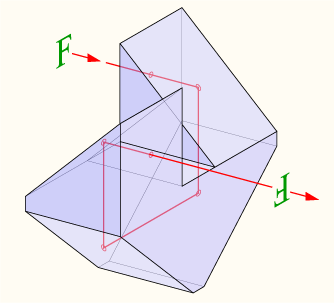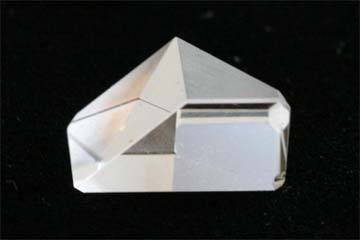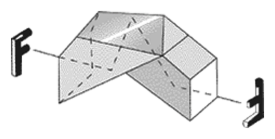Abbe prism
The Abbe prism, named after the German physicist Ernst Abbe, is a special dispersion prism, which causes similar to the Pellin - Broca prism, a constant beam deflection (60 °).
In a broader sense are summarized different pioneered and employed by Ernst Abbe prisms under the term Abbe prism. In addition to the dispersion prism, the count thus not to be confused as the non-dispersive reflection prisms 2 Porro prism type and the Abbe-König prism, as well as their variants.
Design and operation
The Abbe prism is a geometric prism, which has as a base a right-angled triangle having interior angles of 30 °, 60 ° and 90 °. It is usually made of glass or other transparent material. The light is irradiated usually on the short side surface and refracted into the prism. Then it applies to the second cathetus, where it is totally internally reflected ( corresponding choice of material, the total reflection condition allows ), and then exits at the longest side of the base prism.
The prism is designed for a defined wavelength of light and directs it to exactly 60 ° from the original beam path. All other wavelengths are deflected by larger or smaller angle. The wavelength selection is accomplished by rotation of the prism in the plane of the base, and is non-linear due to the gradient of the dispersion to the rotational angle.
To improve the optical properties of the Abbe prism can be composed of several individual prisms, for example of two half- prisms, and a reflection prism. Advantageous is the use of higher refractive-index materials (for the reflection prism ) which allow the total reflection to a greater spectral range. The two half- prisms of refractive material of low effect of reducing the reflection losses. Due to the composition of several individual prisms, the basic shape does not have to necessarily be a triangle. Therefore, can be found in the literature more geometries, which are called Abbe prism.










